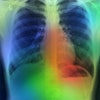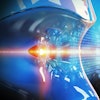Sunday, November 26 | 11:45 a.m.-11:55 a.m. | SSA12-07 | Room S403A
In this talk, researchers will highlight the potential of deep learning for speeding up the detection of malpositioned feeding tubes in critically ill patients.Feeding tubes normally course into the distal stomach or duodenum, but, on rare occasions, they may be malpositioned into the lung or bronchus. This can cause significant morbidity and, rarely, even mortality, according to senior study author Dr. Paras Lakhani of Thomas Jefferson University in Philadelphia.
A chest x-ray is often used to confirm proper placement of the tube before feeding, but, in some cases, clinical demands may delay the review of these radiographs until hours after the study has been completed, he noted.
In these cases, "an automated system could be helpful to expedite detection of critical malpositions," Lakhani said.
After training on an augmented dataset and testing, deep convolutional neural networks (DCNNs) that had been pretrained using the ImageNet color image database produced an area under the curve (AUC) of 0.84 for detecting malpositioned feeding tubes, compared with 0.75 for networks that had not been pretrained. The difference was statistically significant, according to the researchers.
"The classifier showed good accuracy, although ideally one would like to see improvement before utilization in a clinical workflow," Lakhani told AuntMinnie.com. "That being said, the results are promising, and there are many potential strategies to improve these results, including using segmentation networks and more training data."
You can engage in some deep learning of your own by sitting in on this talk, which will be presented by first author Varun Singh.




















